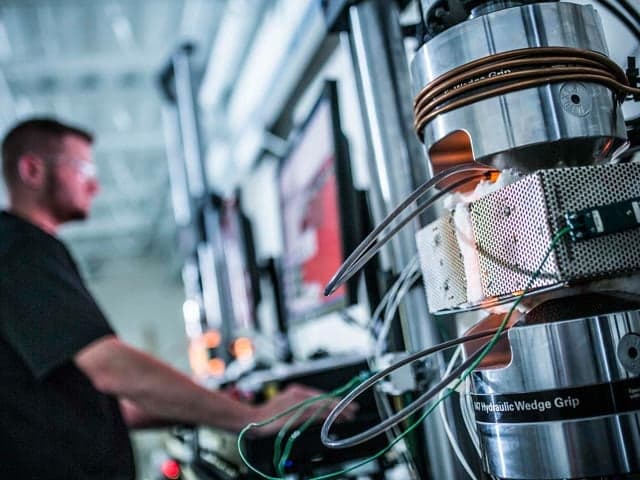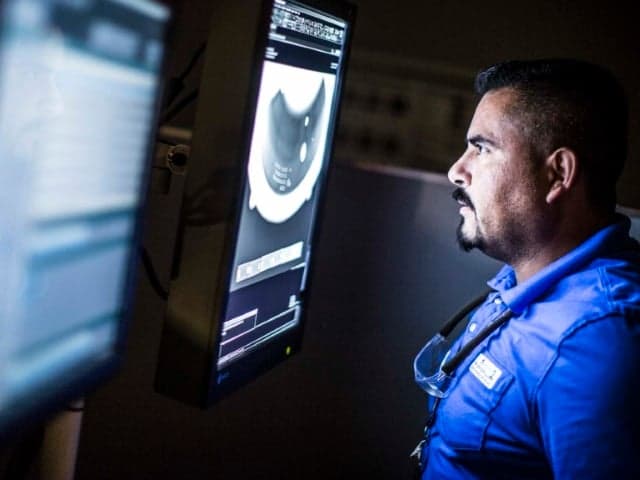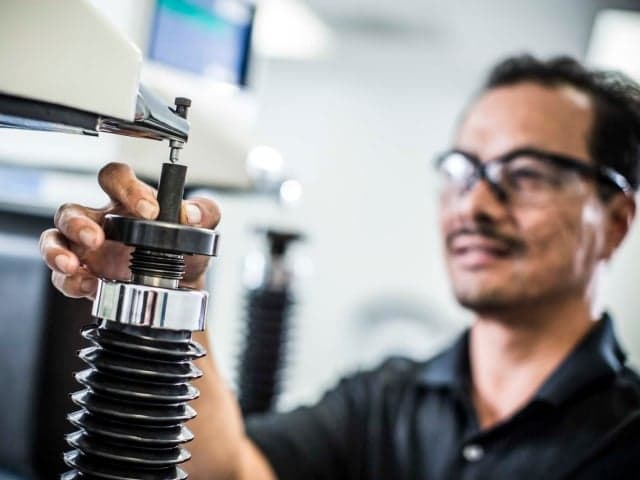Brinell Hardness Test vs Rockwell
Hardness testing is one of the most widely used methods for evaluating materials. Among the various techniques available, the Brinell and Rockwell hardness tests stand out as the most common methods for assessing a metal's hardness and its resistance to wear. In this article, our seasoned expert, Lee Mangham, will guide you through the differences between the Brinell and Rockwell hardness tests, including their methods, advantages, differences, and practical significance in evaluating material hardness.
What is The Difference Between The Brinell and Rockwell Hardness Tests?
While the two tests have similarities, there are several important differences. Both test methods are suitable for the testing of soft and medium hard materials such as aluminum, Cu alloys, and soft steel. Whilst Brinell’s method can test any type of metal, it is unable to measure hardness greater than 650 HB.
The Rockwell test is considered easier to perform and has a shorter total testing time of 10-15 seconds than the Brinell test procedure which typically takes 30-60 seconds.
Many consider the results of the Brinell method to be more accurate and reliable, especially when testing coarse materials, as the spherical indenter distributes pressure more evenly. In the Rockwell test, if the hardness of the sample is not uniform, three indents will measure the average hardness of the sample, which can affect overall accuracy.
What is The Brinell Hardness Test?
The Brinell hardness test (HBW) serves as a crucial scale for quantifying material hardness, defined in ASTM E10 and BS EN ISO 6506-1 standards.
This test involves pressing a Brinell indenter against a test specimen under a specified load and time duration. Typically, a hardened Tungsten steel ball, with varying force ranges based on material type and ball diameter, is employed for indentation. The load application spans 10 to 15 seconds, ensuring stability and accuracy. Subsequently, the resultant indentation is meticulously measured.
The Brinell test measures the width of the indentation using a microscope. This measurement is then converted into a Brinell hardness value – the ratio between the applied force and the surface of the indent – using the Brinell hardness scale.
Some of the advantages of the Brinell Hardness Test include:
- Simple surface preparation
- Easy measurement of the print diameter
- More accurate and precise final measurements compared to Rockwell measurements
- Reduced risk of testing delays due to equipment failure, particularly in contrast to the possibility of diamond cone breakage in Rockwell testing
What is The Rockwell Hardness Test?
Rockwell hardness testing is measured using the Rockwell hardness scale with the method defined in ASTM E18 and BS EN ISO 6508-1.
Rockwell hardness testing is performed with an indenter of a specified size applied with a specified force for a fixed amount of time. A small Tungsten steel ball (HRBW method) is used to penetrate soft materials whilst a diamond cone (HRC method) is used for harder and heat-treated materials.
The test uses a preload to establish a zero position before the main load is applied. The main load is then taken away, leaving just the preload. The Rockwell testing equipment then measures the distance traveled through the material.
Unlike the Brinell method, Rockwell’s method does not measure the size of the imprint, but the depth of the indentation. This measurement is then converted to a Rockwell hardness value directly on the machine.
Some of the advantages of the Rockwell hardness test include:
- A Simpler planning stage than the Brinell test method which requires decisions, such as the selection of the appropriate force, to be made
- Faster results, with an immediate reading of hardness on the Rockwell device
- Shorter test duration at 10-15 seconds compared to the 30-60 seconds Brinell test procedure
- Less damage to the test specimen or material with the test leaving only a shallow imprint compared to the Brinell test method which leaves a large, visible trace.
Brinell Hardness To Rockwell Conversion
The conversion scales for Rockwell and Brinell hardness are not consistent between non-austenitic and austenitic steels and should not be confused with one another. It is therefore important to be extremely careful when comparing Brinell hardness to Rockwell. ASTM E140 gives tables for conversions between the two hardness types and material types along with others such as Vickers and Knoop. It is also important to note that all hardness conversions are an approximation.
Conclusion
Brinell and Rockwell hardness tests are valuable methods for evaluating material hardness, each with its own advantages and considerations. While the Rockwell test offers simplicity and faster results, the Brinell test is often favored for its perceived accuracy and reliability, particularly with coarse materials. Ultimately, the choice between these methods depends on the specific requirements of the testing scenario and the properties of the material being evaluated.
At Element we offer both Brinell and Rockwell hardness testing as part of its extensive portfolio of mechanical testing services. Element’s laboratories can assist with custom or complex setups to suit specific needs and requirements, with our experts guiding you through the entire process, from selecting and managing the most appropriate test procedure to evaluating the results. For more information on hardness testing, please contact Element today.
Related Services

Mechanical Testing Services
Element provides fast, precise mechanical testing services for metals, polymers, and composites, helping industries meet compliance standards and optimize material performance with expert-driven assessments.

Failure Analysis Services
Need expert Failure Analysis Services? Identify root causes fast with Element's advanced testing, global reach, and rapid turnaround. Get expert insights today.

Hardness Testing Services
Element offers comprehensive hardness testing services, including micro, macro, and hot hardness testing. With lab and on-site options, we help assess material durability for engineering, manufacturing, and compliance needs.


